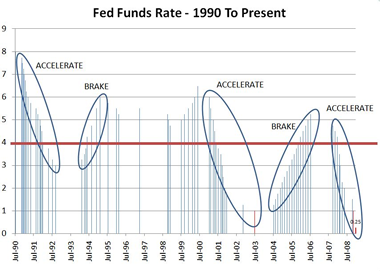Solar Global Warming
SEARCH BLOG: GLOBAL WARMING
I've had some communication with Dr. Tim Patterson of Carleton University in Ottawa, Ontario, Canada. Dr. Patterson is among a growing number of scientists from various fields who have a minority view about global warming: climate change is ongoing and primarily driven by solar activity and some apparent increases in temperature can be linked directly to urbanization.
Part of his argument with those who claim atmospheric carbon dioxide is driving climate change (i.e. global warming) is that the geological record does not support that contention. Carbon dioxide is about 2-3% of the so-called "greenhouse" gases in our atmosphere. Water vapor comprises pretty much the rest of this greenhouse gas. Any increase in carbon dioxide will have a minuscule impact on overall climate and, indeed, over millions of years the concentration of carbon dioxide has been significantly higher... even when global temperatures were colder... during ice ages. Dr. Patterson is not arguing that global warming isn't happening, just that popular wisdom has the wrong drivers of this phenomenon.
I have had online conversations with some, including one person who claimed that Dr. Patterson and anyone like him were "mouthpieces of the coal industry." Actually, Dr. Patterson is far removed from the coal industry. Most of his research is geological and paleontological in nature. Although not the primary focus of his work, by using sedimentary deposits from the ocean floor, he provides a wonderful history of earth's biology directly related to climate changes in some of his work.
For those who fear global warming caused by increases in atmospheric carbon dioxide, I suggest that you plow your way through just two of Dr. Patterson's publications in Adobe format: Late Holocene sedimentary response to solar and cosmic ray activity influenced climate variability in the NE Pacific and Application of Wavelet and Regression Analysis in Assessing Temporal and Geographic Climate Variability: Eastern Ontario, Canada as a Case Study.My research program is presently concentrated on the use of foraminifera to identify: neotectonic and paleo sea levels; paleoceanographic phenomena on the coastal regions of Canada; strategic significance of natural variability in NE Pacific fish populations; the further development of arcellacea as a new class of paleolimnological indicators; and whether the methods of complex systems are applicable in the study of evolutionary phenomena.
Of course, the titles alone may discourage some of you so I will provide summary extracts that may bring out the important points:
Marine-laminated sediments along the NE Pacific coast (Effingham inlet, Vancouver Island) provide an archive of climate variability at annual to millennial scales. A 7.75-m portion of piston core TUL99B-03 was deposited during a ~3045-year interval [~1440–4485 years before present (yBP)] under primarily anoxic conditions. Darker clay laminae were deposited under higher precipitation conditions in winter, and diatom-dominated laminae were laid down when marine productivity was higher in the spring through autumn.as well as...
Wavelet transform and other time-series analysis methods were applied to sediment color (i.e. gray-scale values) line-scans obtained from X-ray images and compared with global records of cosmogenic nuclides 14C and 10Be, as well as the Ice Drift Index (hematite-stained grains) record to detect cycles, trends, and nonstationarities in the climate and sedimentary pattern. Our results show that the marine sedimentary record in the NE Pacific responded to abrupt changes and long-term variability in climate that can be linked to external forcing (e.g., solar and cosmic irradiance). Specifically, a strong cooling in the NE Pacific at ~3550F160 yBP can be correlated to a weakening of high-frequency (50–150 years) pulses in sun activity at the Gleissberg cycle band, similar to what occurred at the onset of the Little Ice Age at ~1630 AD.
Three intervals of unusually low sun activity at ~2350, 2750, and ~3350 yBP are characterized by thick, clay-rich annual sedimentation that we interpret as representative of unusually wet conditions. These intervals of higher precipitation conditions may have been related to a regional intensification of the Aleutian Low (AL) caused by an eastward migration of the Center of Action (COA) of the AL, which occurs during intervals of solar minima. Dryer conditions in the region occur when the COA of AL migrates westward and the COA of the North Pacific High (NPH) migrates northward during intervals of solar maxima. A cyclicity of 50–85, 33–36, and 22–29 years in the sediment color record, lamination thickness, and 14C cosmogenic nuclide, characterized the relatively warm interval from 3550 to 4485 yBP. This record is similar to that of present-day low- and highfrequency variants of the Pacific Decadal Oscillation and Aleutian Low.
2004 Elsevier B.V. All rights reserved.
Our research results indicate that a significant portion of the long-term temperature record in the annual and multidecadal spectrum in urban Ottawa is a result of episodic urbanization (i.e., heat island effects). Analysis of normalized monthly temperature records from three stations in eastern Canada indicates that there was: (a) no significant temperature increase outside the urban Ottawa area during the last century, and (b) most of the interannual variability in the urban and rural areas could be related to non-periodic natural fluctuations.Also see this.








